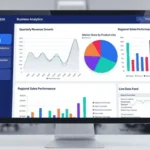PPC Training Delhi

Adwen Plus offers one of the best PPC courses in Delhi, designed for both beginners and experienced professionals. Whether you’re looking for Google Ads training, advanced PPC courses, or PPC certification, our programs are designed to help you build practical skills for managing pay-per-click campaigns across various platforms.
Why Choose Adwen Plus for PPC Training?
- In-Depth PPC Courses: Our PPC courses in South Delhi cover all key aspects of Google Ads, paid search marketing, mobile PPC, video ads, and remarketing. Gain a solid foundation in PPC strategies and advertising management.
- Affordable Pricing: We offer affordable PPC training without compromising quality. Whether you’re just starting or looking to improve your skills with an advanced PPC training course, we have options that fit your needs.
- Industry-Recognized Certification: Upon completion, you will earn a PPC certification in Delhi that reflects your expertise in the field. Our certification is respected by employers looking for skilled PPC professionals.
- Hands-On Learning: Our programs include practical experience with live projects and campaigns. You’ll get the chance to learn Google Ads and other platforms by working directly on real campaigns.
- Job Assistance: With PPC job placement assistance, you will be prepared to start your career in the PPC industry. Many of our graduates go on to secure roles like PPC manager, Google Ads expert, and SEM specialist.
What Will You Learn at Adwen Plus?
- Introduction to PPC and Google Ads: Start with the basics of pay-per-click advertising and learn how to create and optimize Google Ads campaigns.
- Advanced PPC Techniques: Dive into more complex topics like retargeting, display ads, and remarketing PPC. Learn how to manage and refine campaigns for better results.
- Keyword Research & CPC: Learn how to do proper keyword research for PPC campaigns and optimize your ads for cost-per-click to get the most out of your budget.
- PPC Campaign Management: Learn how to oversee a PPC campaign, monitor its performance, and make adjustments for higher return on investment (ROI).
- Mobile PPC & Social Media Ads: Stay updated with mobile PPC marketing strategies and learn how to run Facebook Ads and YouTube Ads campaigns effectively.
Why is Adwen Plus the Best Choice for PPC Training in Delhi?
- Leading PPC Institute in Delhi: We are one of the top PPC institutes in Delhi, offering an in-depth curriculum on both Google Ads & PPC.
- Flexible Learning Options: Whether you prefer to take online PPC classes in Delhi or attend in-person classes, we provide both options to suit your schedule.
- Location-Specific Courses: With options such as PPC classes near me in Delhi, PPC training institutes in Delhi, and specific courses in East Delhi, Adwen Plus makes it convenient for students all around the city.
Key Highlights
- Live Projects Working
- Become a certified PPC expert
- Get a chance to earn Google certification
- 100% job placement
- 1-2 months Training Program
- 10yrs+ expert digital marketers
What is PPC?
PPC is also known as pay-per-click. It is to be recognized as one of the most popular online marketing tools where some amount of money is paid to Google search engine and social media platforms by the advertisers where a user clicks on 1their ads. The major part of PPC advertising is search engines, like Google Ads.
How PPC Works?
PPC advertising works on the principle of enabling advertisers to bid on the particular keywords or phrases that they would like to appear in their ads in the best possible search engine results. When a search engine visitor searches for one of those keywords, the ad will show in the #1 position on Google. Some charges are taken by search engines from an advertiser each time a user clicks on their ad.





